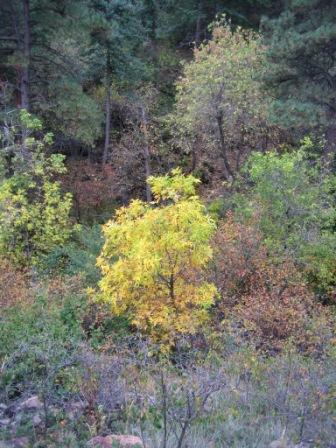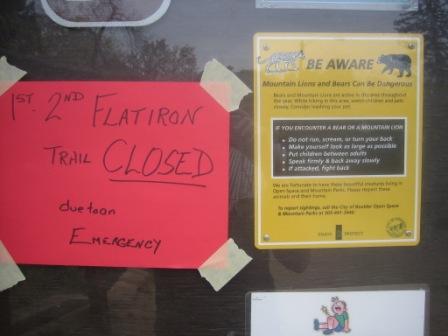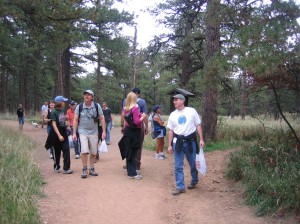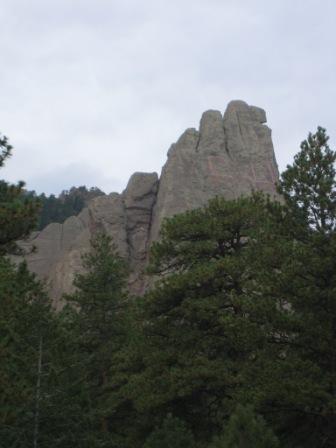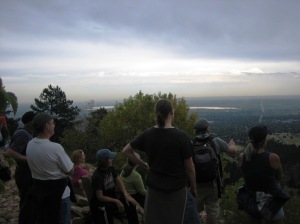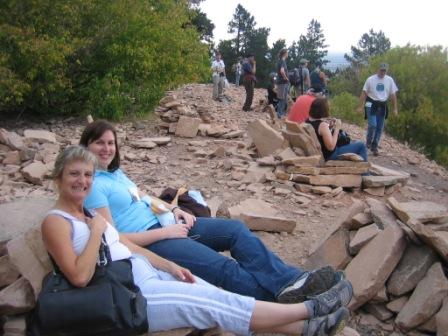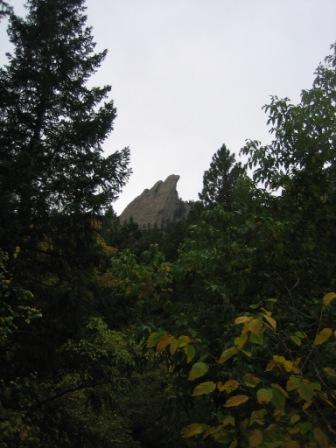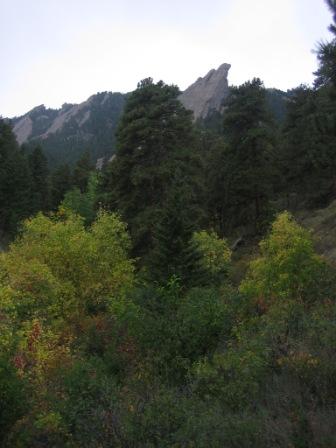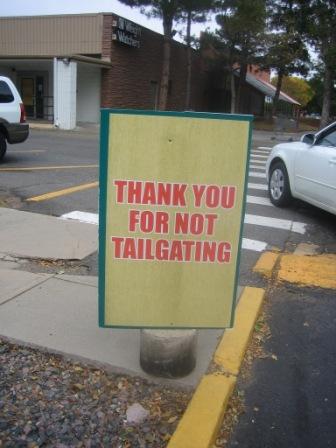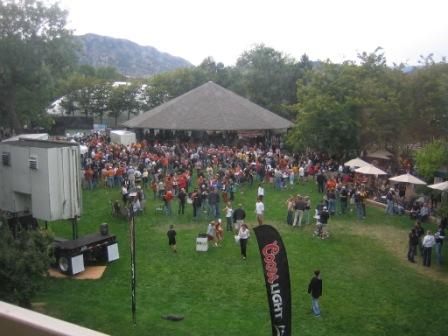At the 2008 Western Literature Association Conference in Boulder, I participated on a discussion-oriented panel (with Neil Campbell) on the western/sci-fi television show Firefly (created by Joss Whedon). Our goal, in keeping with the orientation of the conference, was to discuss the western elements of the series. Part of the fun of Firefly is the way it explicitly explores the western roots that many sci-fi films and television series share: through the use of western character types (think Stagecoach in space), the use of multiple western visual and aural motifs (space as wide open plains, individual planets with western topographies, guns, clothing, colloquial speech), and the use of various western plot devices, train robberies, cattle rustling, etc. The post below, originally published on the Firefly and Western Literature blog, addresses few (but only a few) of the interesting issues from the panel.
Although those of us who are fans of westerns thought that Firefly‘s awareness of its western roots was one of the series’ strentghs, that was not the case with the network on which it originally aired. In fact, they were often worried about the series’ western elements and sometimes insisted that certain elements be added or changed to conceal those nods to the western.One of the first episodes to air, “Train Job” is one of the most explicitly Western episodes in the series, as the train robbery is a staple of the Western, and the series Western in particular. The episode reminds me a lot of Alias: Smith and Jones, a tv Western from the mid-seventies that I’ve been watching on DVD. Members of the Butch Cassidy gang, “Smith” and “Jones” decide to go straight (under the aliases Smith and Jones) and earn amnesty by not committing any crimes for a year. Their former speciality is the train robbery, and several plots have them working to thwart other attempted train robberies. Anyway, the opening credits compare them to “modern day Robin Hoods,” and describe them as “good bad men” (and the character type of the “good bad man” has a long history in the western). That seems to be the character type of Firefly‘s central hero (or anti-hero), Captain Malcolm Reynolds. In this episode, he returns the goods stolen during the train robbery when he realizes what he’s stolen (much needed medicine). Smith and Jones are notable for never having killed anybody, despite all their robbing and stealing, and the plots often involve labyrinthine ways to avoid killing the bad guy. Mal has no problem killing people who need to be killed.
If “Train Job” is explicit in using western themes and other western elements, “Bushwacked,” the next episode that follows, seems much more concerned with other genres than the western.
Although, the western elements still seem to be there, almost as a subtext, as if those potentially offensive (to the network) western tropes had to be concealed for awhile. So, instead of an episode with explicitly western elements, we get one that involves a more general meditation on civilization and savagery (a theme that the western has explored many many times).
Rather than “savage Indians” on the western frontier, we have the savage Reavers. As our representatives of civilization, we have the arrival of an Alliance ship, and of course, our Firefly crew falls somewhere in between. Even within the crew, the characters fall at different places on the line between savagery and civilization, with Jane perhaps the least civilized, and Inara (a highly respected companion) as the most civilized.
The core plot of the episode is identifiably western, though. A group of settlers traveling beyond civilization to set up a border colony is attacked, not, in this case, by Indians but by Reavers. Although the more typical western might place us among the colonists, it’s also not unusual for the main characters in a western to come upon the remnants of such an attack. Actually, that happens early on in season one of Deadwood.
This episode is our first extended introduction to the group known as the Reavers. When Jane comments, “Reavers ain’t men,” he begins a conversation among the crew about the relationship between civilization and savagery, and whether or not it’s possible to go so far into savagery as not to be able to come back. Rev. Book responds, “They are [men]. Too long removed from civilization perhaps.” Mal answers, “Jane’s right. Reavers ain’t men. They forgot how to be. They’re just nothing. They got out to the edge of the galaxy, to that place of nothing and that’s what they became.” The debate here is not uncommon to the western and to frontier stories in general. The commentary on the Reavers also reflects the situation of the Firefly crew. How far to the edge of civilization can they go before reaching that “place of nothing”? Rev. Book, a representative of civilized values, wants to return to the derelict to pray for the slaughtered humans: “How we treat our dead is part of what makes us different from those that did the slaughtering.” Mal agrees, but also has his own agenda for doing so.
Jane responds, “I can’t believe this, we’re staying put for a funeral!” I think there may be an allusion to The Wild Bunch here. I seem to recall a debate over what to do with the body of one of the bunch killed in a robbery attempt–with a posse giving chase, the bunch, with some discussion, leaves their comrade behind (I recall an Ernest Borgnine speech in which he invests the idea of staying to bury their comrade with the same sort of disdain that Jane puts into his comment).
The episode takes a bit of a turn after Firefly detaches from the derelict ship. An Alliance ship arrives and forcibly boards Firefly. Mal comments, “Looks like civilization finally caught up with us,” and perhaps that’s why much of the remainder of the episode seems less western. With a series of interviews/interrogations of the Firefly crew members, the episode begins to seem a little like a Star Trek episode (seeming all the more so when Kaylee, sounding a bit like ST‘s Mr. Scott, gets upset by disparaging comments about her ship: “Junker?”).
However, the generic intertext for most of the rest of the episode is the horror movie, with the sole survivor of the Reaver attack, a young man rescued by the Firefly crew, transforming into a Reaver himself, so affected by the savagery of the attack that he witnessed that he becomes one of the savages–a bit like a vampire or werewolf, but with the transformation explained psychologically rather than mystically. Although there’s often an anxiety, particularly in captivity narratives, that someone who spends too long with savages will “go native,” the transformation here seems more in keeping with horror and fantasy tropes than western ones. He escapes from the sick bay, conceals weapons, and attacks Alliance doctors, and then he is loose and in hiding.
The shift to horror is set up early in the episode when the derelict is first discovered. “What is it?” someone asks, to which River whispers a response, “It’s a ghost.” Primarily, though, it’s a psycho story rather than a ghost story. There are even several moments when we see via subjective camera from the point of view of the stalking/hiding psycho, a hallmark of slasher films like Halloween and Friday the 13th.
As Mal comments, “Things go the way they are, there’s going to be blood,” and there is. Other recent film westerns, from The Three Burials of Melquiades Estrada to the Oscar winning There Will Be Blood (it’s association with the horror film signaled by its title as much as Mal’s similar comment signals Firefly’s turn to horror), have also been notable for a turn to the horror genre. Even The Assassination of Jesse James by the Coward Robert Ford represents Jesse as a kind of ghostly otherworldly figure as he stalks and kills former members of his gang.
As Mal leads Commander Harken on a search for the survivor, we are thoroughly inside the horror genre in terms of the way the sequence is shot, plenty of dark spaces and moving cameras, point of view shots, building suspense by limiting what we can see. When the survivor jumps out, killing one man and spraying Harken with blood, his appearance is more 1970s punk than Hollywood Indian (he seems to have inserted safety pins at various places in his face). Mal dispatches him, saving Harken’s life, and wins thereby the release of his crew and ship.
Mal’s final dialogue returns to the theme of civilization and savagery. When Jane complains about Harken’s confiscating their cargo, Mal answers, “He had to. Couldn’t let us profit. Wouldn’t be civilized.” But, like the western’s Tenderfoot character type, Harken has been changed by his frontier experience. Letting the crew go free is not “civilized” behavior either, and the final image is of the Alliance ship destroying the derelict–which Harken earlier refused to do. From Mal, he has learned something about survival in the wilderness, which sometimes means bending civilization’s rules and orders. But, as Mal realizes, punishing the crew by confiscating their salvage from the derelict is also a way for Harken to assure himself that in his encounter with the nothingness of the frontier, he hasn’t forgotten “how to be a man,” at least, as the Alliance defines appropriately civilized behavior.
This post was originally published in a slightly different version at the Firefly and Western Literature blog.

